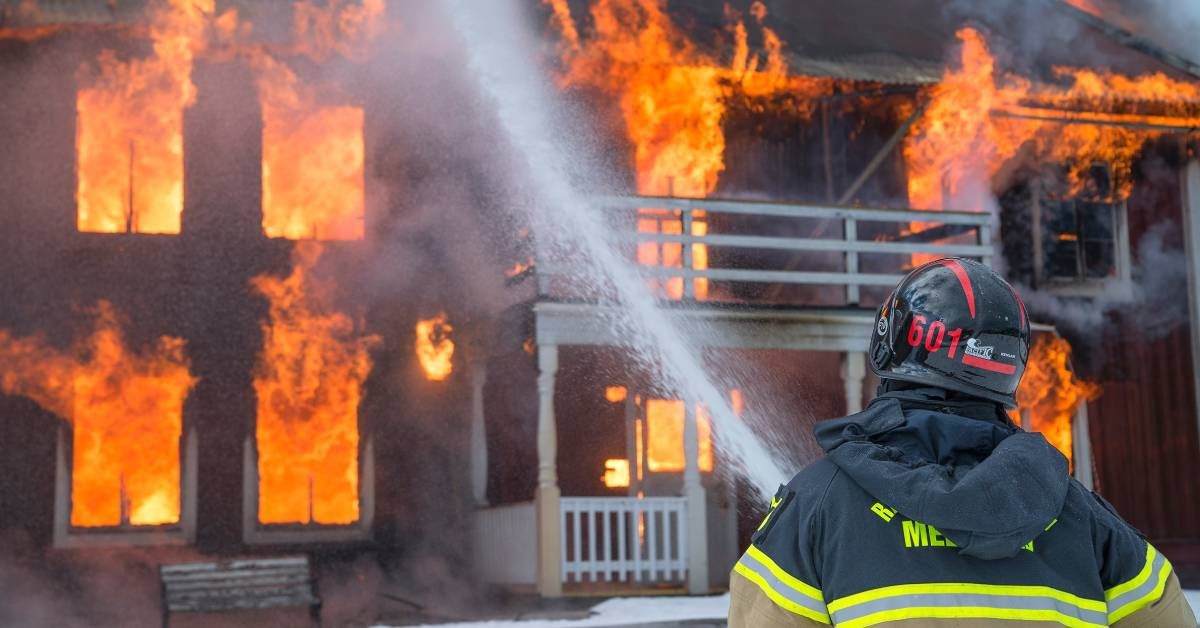If you have little ones in your life, you should be sure they know what to do in case of a fire, especially at home.
If you’ve never covered fire safety with any of the children in your life, chances are they’re only plan of action is to rely on you, the adult in their life. But what happens if you’re unavailable? Fire safety seems like something everyone knows inherently, but unfortunately, no one is born knowing how to be safe during a fire emergency — even you were taught what to do at some point.
While they’ll cover some basics at school, usually a fireman comes and gives a talk, however, there are residential specific tips that youngins should be aware of as well.
“THE TALK”
As a parent, you’ll be having a lot of important talks with your children over the years. One that often goes forgotten is one about fire safety. There’s a lot more to prepare for than just, “fire is hot,” “get out of the building if you can,” and “wait for the firefighter.” Here are some terms and situations you teach your child in case of emergency.
Stop, Drop, and Roll
A golden oldie, this is one of those phrases you’ll probably remember on your deathbed but never actually use. Considering the frequency and use of this mantra, be sure your child knows it and can explain what it means. Our brains sometimes play funny tricks like forgetting the meaning behind certain words if you don’t study both the definition and the term. It’s said that in a high stress, emergency situation, a person will forget 80 percent of what they’ve learned to prepare for that emergency. You definitely want “stop, drop, and roll” to fall in that 20 percent that your child remembers.
Save Yourself
Depending on the age of the child or the time of the fire, you may not always be able to get to them. So what should your child do if they’ve been separated from you? Look for an exit immediately, if one is available they should take it; teach them to get out and save themselves. Everything is replaceable except life. Teach them not to waste time by grabbing their phone, or a book, or a toy, or even a jacket. There is no time to do anything but escape, unfortunately in some circumstances, that even extends to saving pets.
ACTION!
If there is a fire at home, what do you do? Does your family have an emergency plan? Worse, what if you’re trapped inside? These are all possibilities you should prepare your munchkin for, as scary as that may be. Additionally, it is crucial to remain calm and strategize when evading a fire, so this is a great time to preempt any questions and even practice what to do.
Feel The Handle
Assuming that your child has their own bedroom and a fire were to start at night, they should know how to exit their room safely. Before flinging open the door and running for their life, kids should know that big, breezy actions like that can actually spread the fire or make it worse. Air and fire are best friends, like peanut butter and jelly, so the less air the fire is exposed to, the better. A good trick is to softly touch the metal door handle, to know if the door is safe to open. If the fire is close, the door handle will be hot to the touch, like it is in old cartoons.
If the door is safe to open, exit and look for a way to evacuate. If there is no available, easy evacuation, go back into the bedroom, close the door, and…
Seal The Room
Sealing the room means that you’re doing your best to keep from sharing your air supply with the fire. Have something heavy and non-flammable on hand next to the door to block the fire from creeping in via the crack under the door. Even if you can’t find something non-flammable, you should still teach your loved one to stuff towels or shirts along the bottom of the door to keep smoke from crawling in. That is where they should wait for the fire department or even better, use an…
Emergency Exit
In this particular case, we’re talking specifically about rooms on the second floor or under the building. It’s a good idea to have these types of rooms prepared with an emergency exit when possible and educate your family on how to use them properly. An example of this would be buying a collapsible escape ladder for your second story window.
It’s a good idea to come up with an “in case of emergency” plan with the whole family so that everyone is on the same page for what to do. Choose a place outside to meet, designate a neighbor’s door to knock on for help, and even reenact scenarios if it makes people feel safer.
TOOLS
It’s important to note that “stop, drop, and roll” or running away are not the only options in handling a fire. In today’s modern age there are lots of tools in the proverbial toolbelt of firefighting. Here are some more miscellaneous but still important gems of knowledge to pass around to your kids and other family.
Fire Extinguisher
A classic, everyone knows about this one! But did you know that fire extinguishers expire? We suggest checking the pressure gauge on the outside of the canister monthly. If the needle is in the green, there’s no need for a replacement yet and the extinguisher will do its job in a pinch.
Smother
If the fire is relatively small or maybe on someone and you don’t have water readily available, cutting off oxygen to the fire is a good idea too. You can buy fireproof blankets, but the main idea is to smother out the fire and kill it by trapping it without air. Movies use this technique a lot of its dramatic effect.
Get Low
Something else you might see in movies is people crawling on their belly to get out of the house. While that may seem slow and silly, there’s actually a reason for it and in some cases it is a good idea. Heat and smoke rise, depending on the size of the fire and the amount of smoke, do your best to stay as low as possible.
Grease Fires
Absolutely never ever ever dump water on a grease fire. Water will spread the fire and make it worse. Instead there are a couple of popular options. If there’s a fire in your kitchen caused by grease, here’s what you should do:
Cut off the heat source immediately
Put a heavy, metal lid on top of the fire (a glass one will shatter) to suppress it
If the fire is small enough, try to use overly generous amounts of baking soda or table salt to smother the flames
Use a halogen extinguisher, from a distance and at a downwards angle to minimize accidental spreading
If you cook semi-professionally and more than average in the kitchen, you may want to invest in some Aqueous Film Forming Foam (AFF) a high grade, fast acting, firefighting foam.
Again, NEVER use water to try to put out a grease fire.
MLN FIRE PROTECTION
We hope you learned something new in this blog and that you and your family feel safer. Thankfully most of these emergency instructions are rarely utilized because of the power of today’s technology. With modern sprinkler systems, fire protection design, and deluge systems, like the ones we provide and install at MLN Fire Protection, you can rest easy knowing that all this emergency knowledge is much less of a life or death matter than it feels like when you’re learning. Take a moment to be sure that your apartment building is properly equipped to protect your family and call MLN Fire Protection today!

